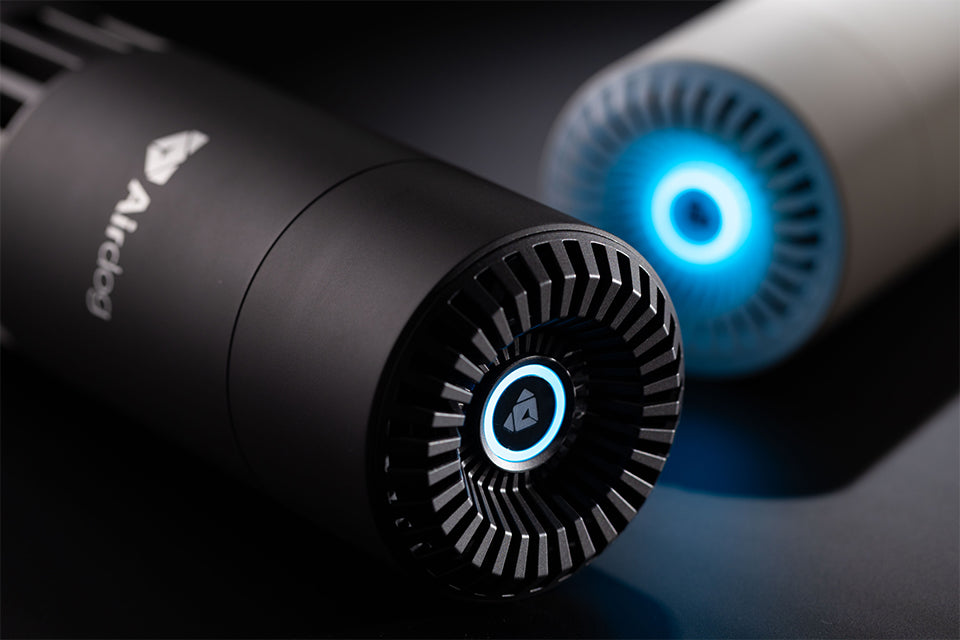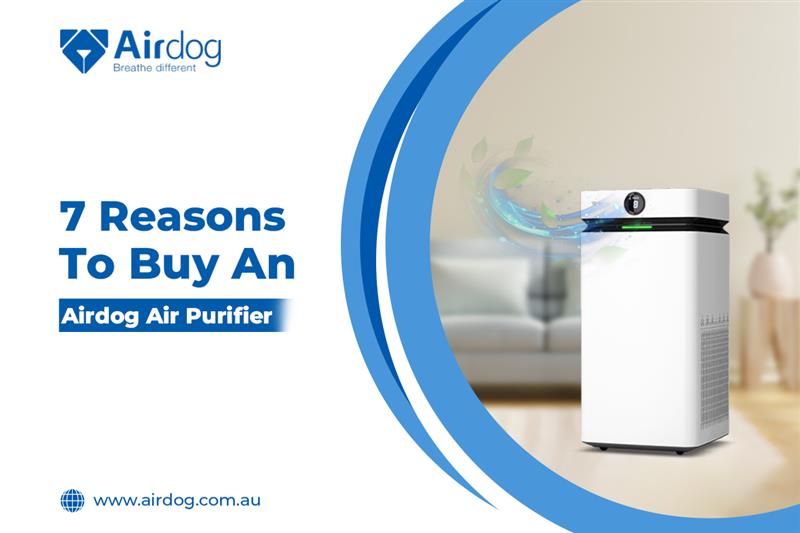How Does Airdog Outperform Other Air Purifiers in Eliminating Smoke and Dust?
When you purchase an air purifier, especially in Australia, you need to factor in its ability to quickly remove smoke and dust from the air so that you can be sure it won’t let you down during bushfire season.
When these raging swathes of fire and smoke begin their rampage, they not only destroy habitats, wildlife, and homes but also cause lasting damage to health.
While a bushfire reduces its surroundings to ashes, the smoke (a mixture of fine particulate matter and toxic gases) affects breathing, causing respiratory issues even in people living miles away, ultimately affecting the health of people in surrounding regions.
As climate change affects and impacts Australia’s air quality, what is your plan to protect your children and loved ones from rising air pollution levels? Do you really believe any ordinary air purifier is powerful enough to protect their health?
Or do you need something more powerful, like an air purifier that tackles even the smallest particulate matter (~ 0.3 microns) and runs without a performance drop even on the days with the worst Air Quality Index?
Discover how the Airdog air purifier range protects your loved ones from smoke and dust, and get familiar with the issues it has to tackle.
How Bushfires Contribute To Poor Air Quality
Australia is prone to hellish bushfires and dust storms during the dry season (December to February).
Southern Australia’s Mediterranean-type climate, which it has in common with other ecological tinderboxes like Chile and California, is characterised by a long and hot dry season marked by strong, rainless winds.
The intense heat sucks out the moisture from grass, shrubs and undergrowth, leaving behind dense and parched flammable vegetation. If a small fire is ignited, it is quickly fanned by strong winds, turning into a destructive mega-blaze within hours.
Almost 90% of Australian bushfires, though, are caused either accidentally or deliberately by fires lit by people. The remaining 10% of bushfires are the result of lightning strikes on bone-dry grasslands, leaves, undergrowth, trees, and other combustible vegetation.
Bushfires release toxic gases, solids, and liquid particulate matter.
The two most common types of particulate matter formed during a bushfire are PM10 and PM2.5. Both are highly dangerous to health.
-
PM10
PM10 particles are those that are smaller than 10 microns in diameter. They enter the eyes, throat, and lungs, but not the bloodstream.
-
PM2.5
These particles are around 2.5 microns in diameter and easily end up in the bloodstream, finally lodging in the deep lungs. There is strong evidence that PM2.5 exposure is linked to respiratory illnesses, cardiovascular disease, and increased risk of death.
PM2.5 from bushfires has been known to cause the worsening of asthma symptoms, increased emergency department visits, and higher rates of hospital admissions.
Apart from PM10 and PM2.5, bushfire smoke also contains toxic gases like CO, CO₂, CH₄, the NOₓ group, formaldehyde and benzene, ash, soot, tars, and resins. One byproduct of the reaction between these compounds in sunlight is ozone, a deadly air pollutant.
How Dust Storms and Climate Change Contribute To Air Pollution
As with bushfires, air quality levels also plummet during a dust storm. In South-Eastern Australia, dust storms arise during extreme heat and intense drought-like conditions.
Wind speeds are high, and moisture levels are low in a dust storm. PM10 particles are present in concentrated amounts in the air during and after a dust storm. PM10 particles make venturing outside without a P2 or N95-type mask risky.
Other than the PM10 and PM2.5 particles, dust storms carry Silica (SiO₂), Kaolinite, Illite, Calcium Carbonate, Iron oxides, and other soil minerals.
Pollen, spores, bacteria, viruses, fungi and endotoxins are some organisms that can spread in a dust storm. If the dust storm passes through a highly industrialised region, it can also bring along industrial pollutants, pesticides, and heavy metals.
These particles are harmful to children and those with respiratory issues. Dust storms exacerbate asthma symptoms and can prove to be fatal to those who are suffering from long-term conditions like COPD, asthma, heart disease, or have previously suffered a stroke.
With climate change, the duration of the dry season has become longer, increasing the risk of dust storms and bushfires. Climate change also increases the presence of ground-level ozone in urban areas, impacting the quality of indoor air.
Man-Made Activities That Worsen Air Pollution
It’s not just bushfires, dust storms and climate change that contribute to air pollution.
Man-made activities like mining, industrial activities, construction work and vehicular emissions release nitrogen dioxide, volatile organic compounds and particulate matter into the air.
These are harmful to the health of young children and those with respiratory issues.
If you live with smokers, smoke and ash are a common part of your lifestyle. Cigarette smoke contains dangerous particles like tar, benzene, ammonia and nicotine.
How Does Airdog’s Two-pole Active Filtration Technology® (TPA) Mitigate Air Pollution?
The Airdog range of air purifiers uses a patented technology developed as an environmentally-friendly answer to the use of wasteful HEPA filters.
The Airdog TPA air purifier works in 5 steps:
-
A pre-filter captures larger particles like hair, pet dander, lint, and dust on a washable mesh.
-
Air then passes through a high‑voltage discharge, energising and positively charging ultrafine particles, including PM2.5, bacteria, viruses, mould spores, down to 0.0146 μm. The electric field kills rather than traps 99.99% of the bacteria and viruses. Ultrafine particulate matter (~0.02-0.1 microns) is easily filtered thanks to the ionic field.
-
The charged particles stick to the oppositely charged washable metal plates and are removed from the air.
-
The catalyst filter contains materials like activated carbon or composite catalysts to remove VOCs, odours, formaldehyde, and reactive gases.
-
Finally, the air is expelled through the vents on the top. The result is fresh and clean air that is remarkably free from smog, heavy metals, and chemical vapours.
What makes the Airdog’s TPA technology stand up to the challenge of air pollution from bushfires, dust storms and vehicular emissions? Its features are what set it apart from other air purifiers.
-
The Airdog can capture particulate matter down to 0.0146 μm, which is significantly smaller than HEPA’s 0.3 μm threshold. Its strong nano-scale filtration makes it the perfect choice to remove ultrafine particulate matter present in dust and smoke.
-
It offers long-term stable performance, 50x more than a HEPA filter, even when its collection plates start to fill up. The Cumulative Clean Mass (CCM) is a metric designed to measure how much pollution a device can trap before its performance is affected.
A traditional HEPA filter maxes out after filtering the smoke from around 45 cigarettes. In contrast, an Airdog TPA purifier can handle the smoke from 440 cigarettes with only a 0.2% drop in performance. This means it can be a lifesaver when smoke from bushfires or dust storms causes a drop in the air quality.
-
With the Airdog air purifier, there is no need for costly HEPA filter replacement. All the plates and pre-filters are washable, reducing waste and ongoing cost to zero.
-
Airdog air purifiers come with an inbuilt AQI, which adjusts performance depending on the present air quality. It’s an efficient way to monitor air quality in the room and save on electrical consumption. There are 4 modes of operation, which means you can control its performance to suit your requirements.
Explore to Choose the Perfect Airdog Air Purifier for Your Home
What Next?
When selecting an air purifier for your home, don’t forget to factor in its CADR (measure of how fast and how much air the purifier can clean).
An air purifier with a higher CADR cleans the room faster and is a lifesaver if smoke-laden air from a nearby bushfire or a dust storm blows into your neighbourhood. It’ll help you get the indoor air clean in no time and restore a sense of calm at home, especially if you have children or older adults living with you.
Pick out an Airdog depending on the size of your room and the CADR. Then you are all set.


